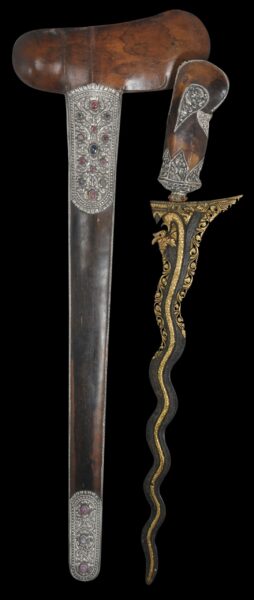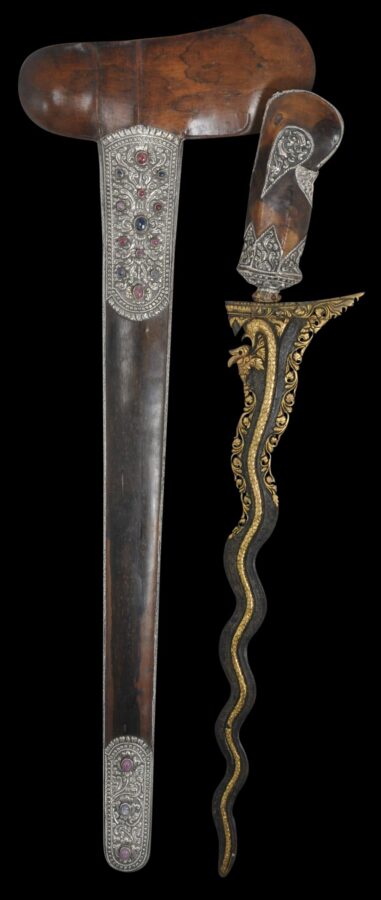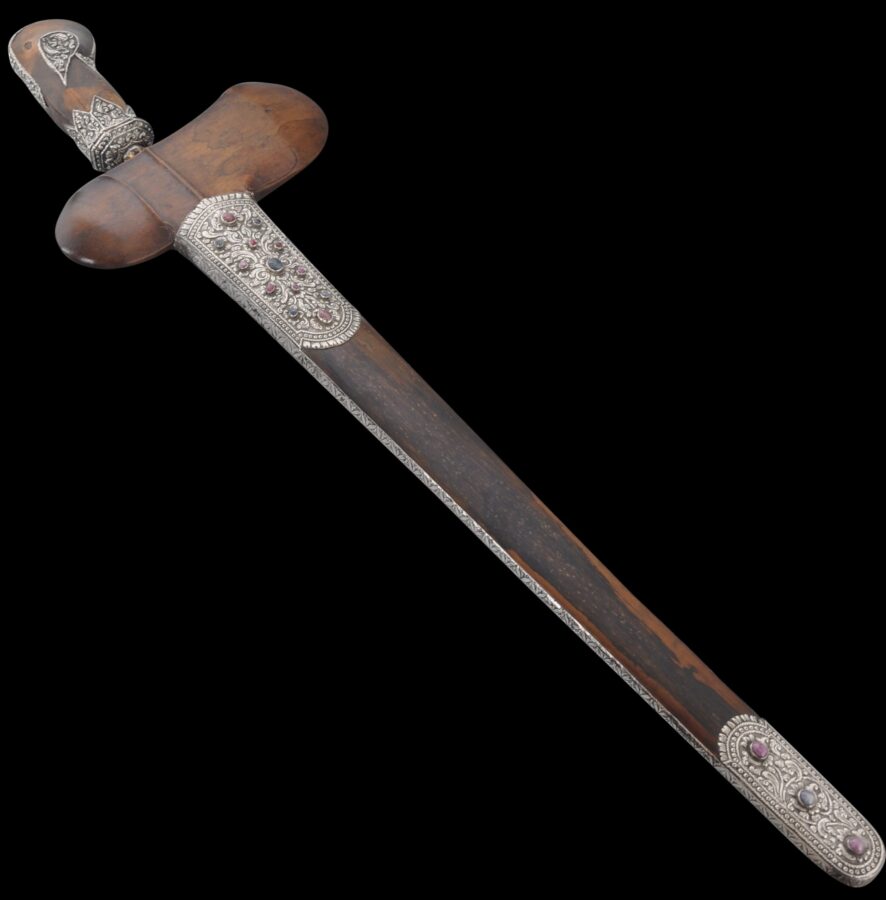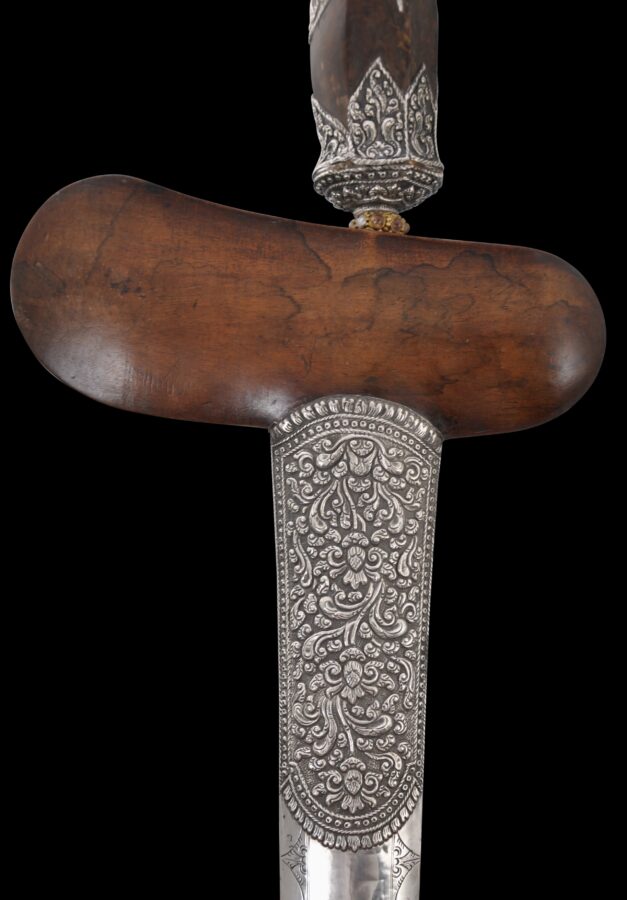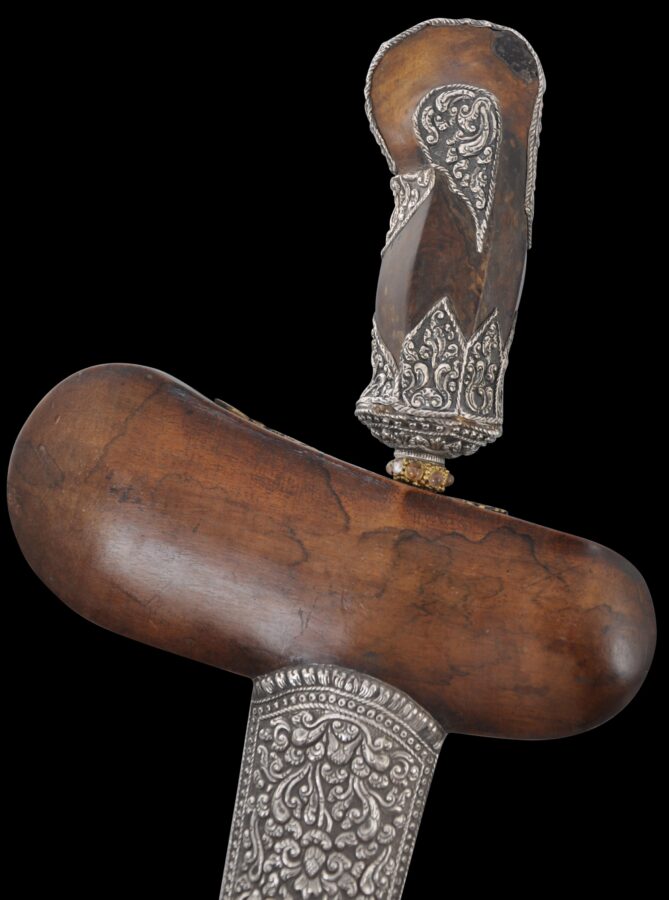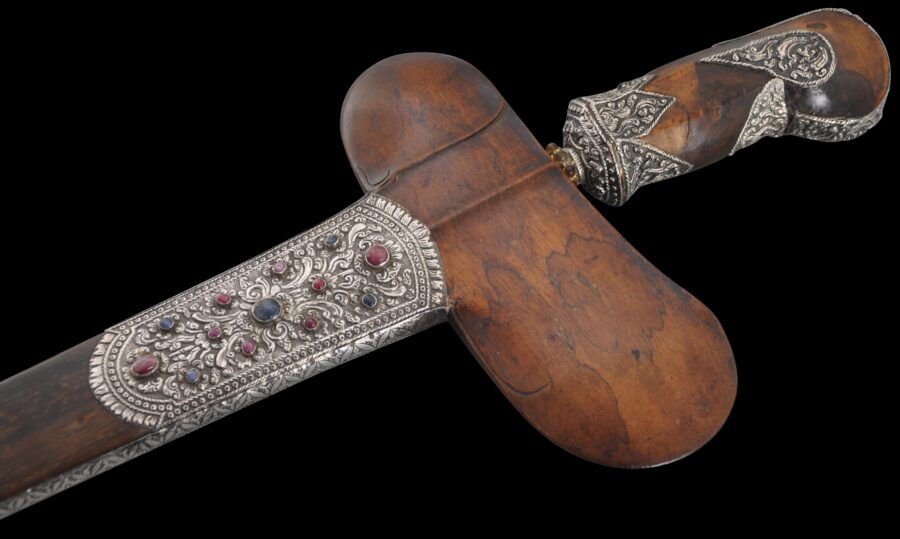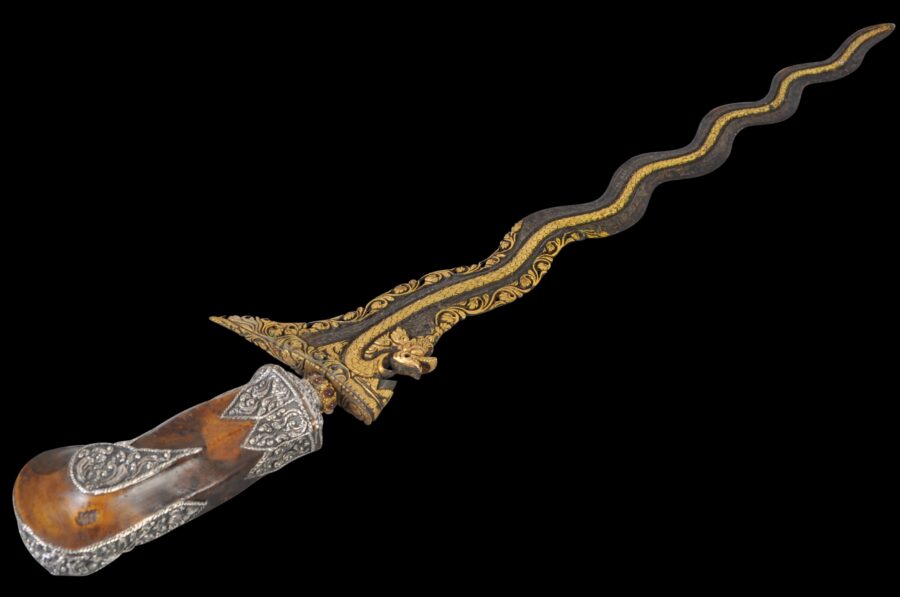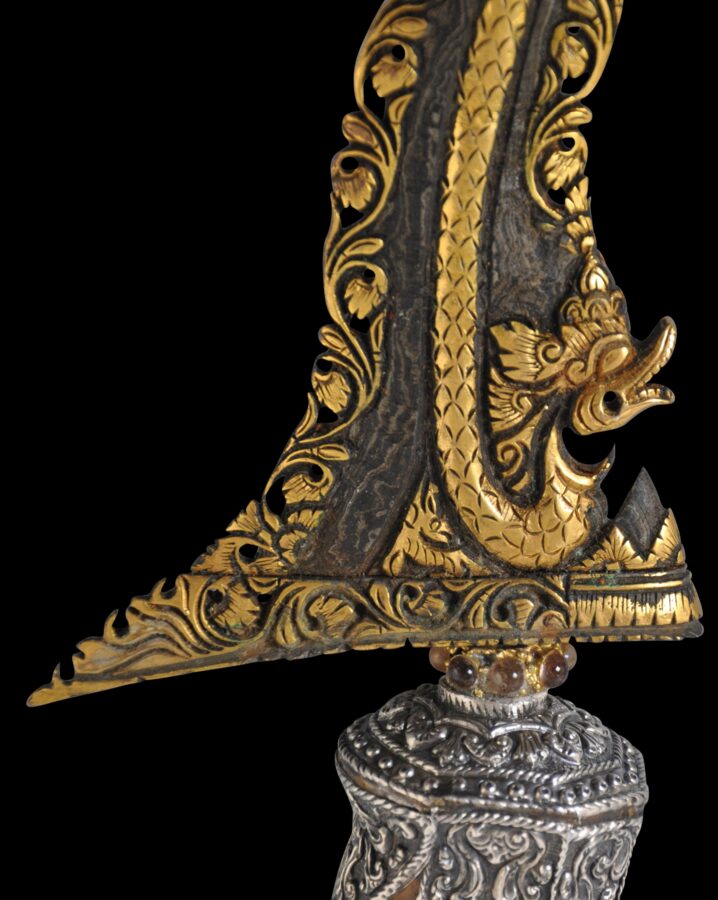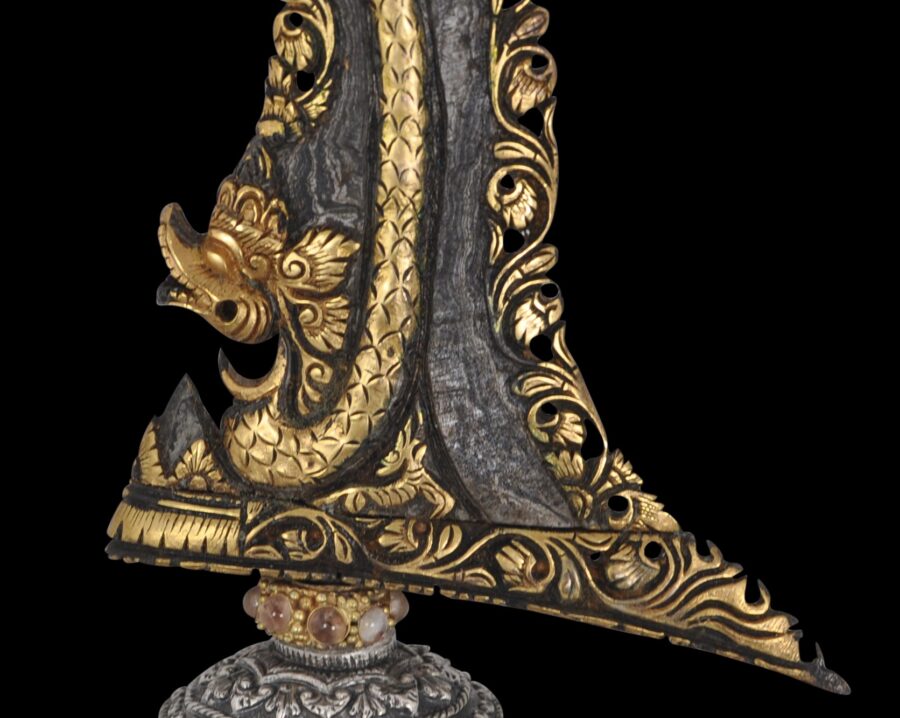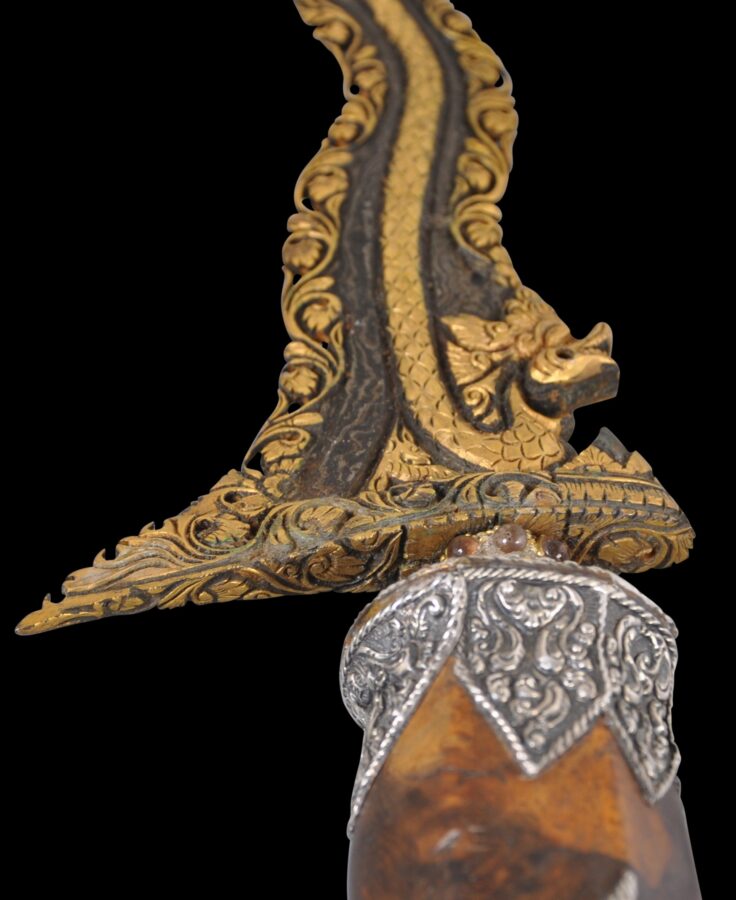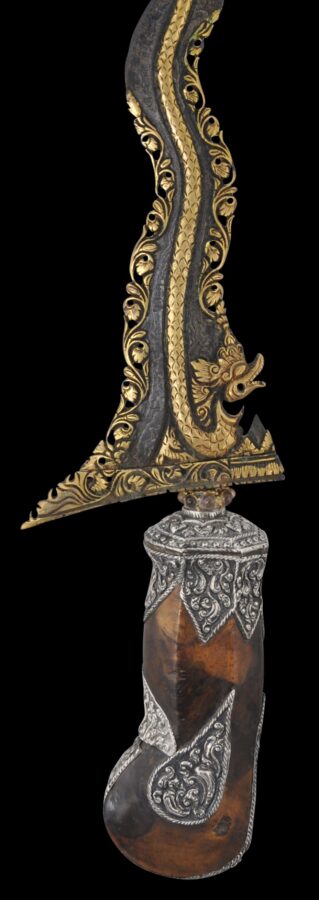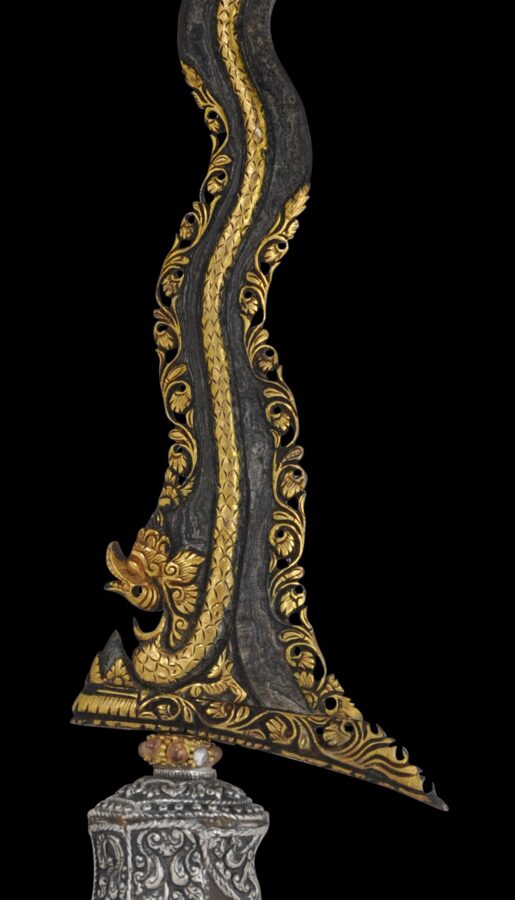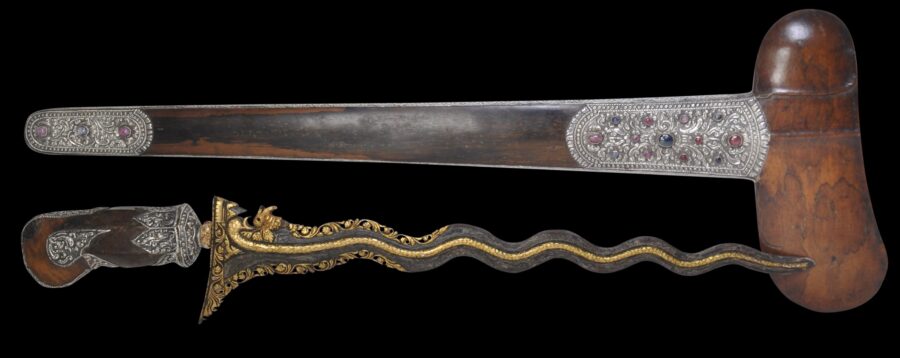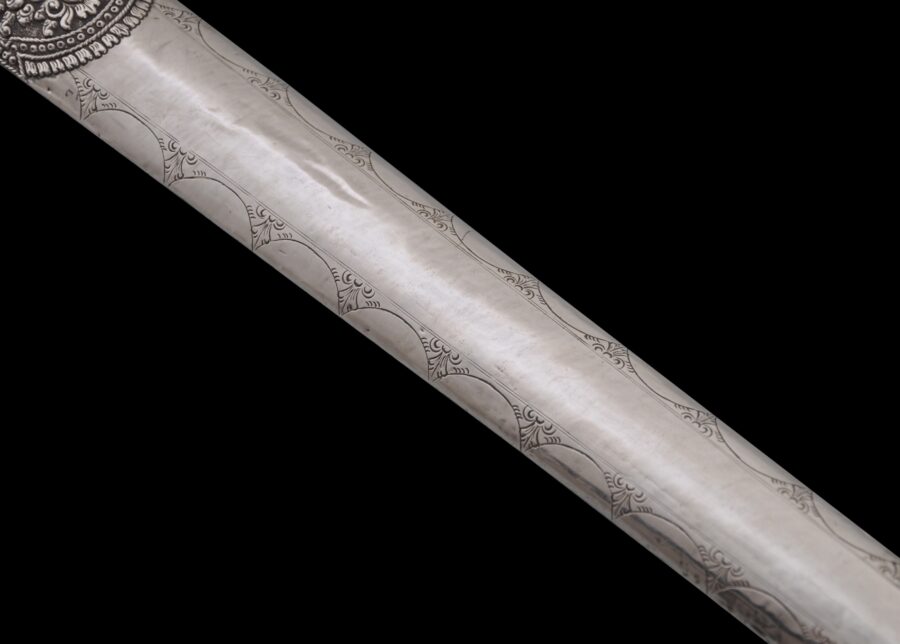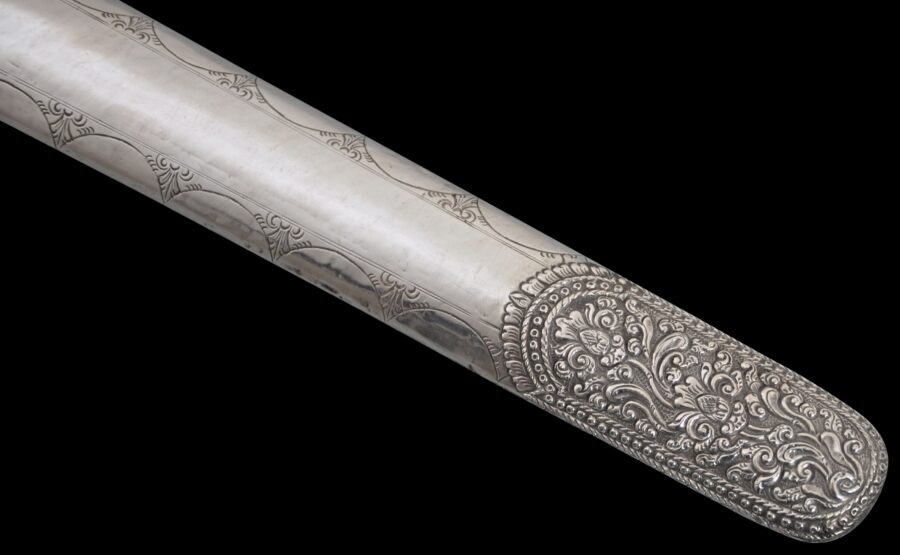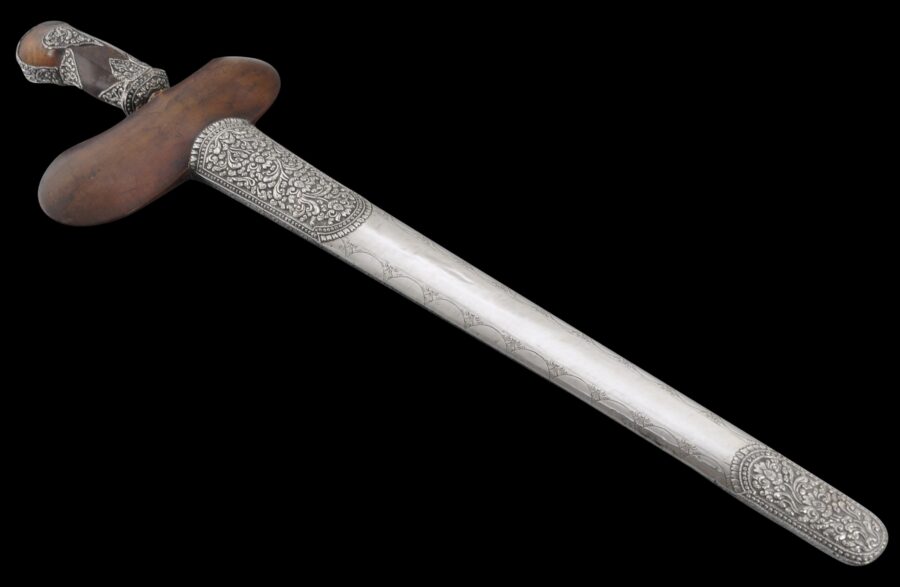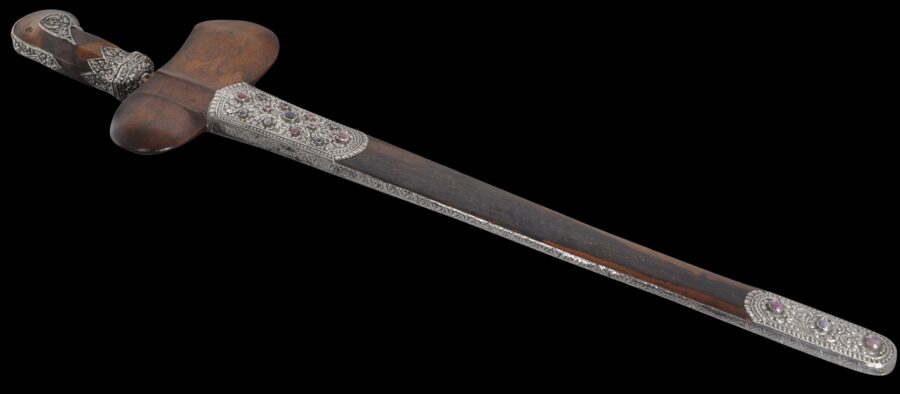This fine Balinese kris (in Balinese, kadga or kadutan) almost certainly is of aristocratic provenance as suggested by the exquisitely chiselled and gilded blade and the use of gems on the scabbard. The blade itself is somewhat delicately made – in keeping with most Balinese ceremonial krises.
The eleven-luk blade which almost certainly dates to at least the 18th century is of finely worked damascened iron with a fine pamour that has been pierced and beautifully chiselled with a crowned naga image on both sides of the blade and with both the lower edges being decorated with scrolling foliage. A small deer has been added to both sides beneath the naga. The foliage edging and the nagas have been highlighted in high-carat gold. The sinuous bodies of the nagas extend to the entire length of the blade so that the gilding also runs the length of the blade. The top edge of the blade (sirah kechak) has been chiselled in relief and gilded – this is the part of the blade that remains visible when the blade is in the scabbard.
The Madura-influenced hilt. the kidney-shaped handguard (wrangka) the scabbard are of precious pelet wood, with its distinctive blond and dark grain. The scabbard is fully encased with high-grade silver over-sheaf (pendok) on one side, which has been engraved and has lower and upper panels chased with floral and foliate scrollwork. On the other side, there are chased silver upper and lower panels that are set with ruby and sapphire cabochons, all in high box silver settings.
The hilt is set with many silver plaques chased with scrollwork.
The hilt ring (mendak) is of high-carat gold with fine granulation work and set with eight rock crystal cabochons.
A Balinese kris with a related though less elaborate gilded naga blade is illustrated in Hales (2013, p. 115). This blade is attributed to the 18th century.
Traditionally, the kris was very important to the cultures on Java, Bali, Lombok and Madura islands. The kris was an important marker of power and prestige. Heirloom (pusaka) krises were deemed to be imbued with supernatural powers, such that their possession conferred on their owners power and prestige, rather than the other way around. Such krises were never intended for use in combat but served purely ceremonial functions.
The blade fits perfectly into the scabbard. There are no losses. The silverwork is very fine and the chiseling on the blade and the careful application of the gold is among the finest we have seen.
The kris has come from an old UK collection and appears to have been in the UK for many decades and probably longer. (The silver was black with age when the kris came to us.)
Overall, the is a splendid Balinese kris.
References
Brinkgreve, F., & D.J. Stuart-Fox (eds), Living with Indonesian Art: The Frits Liefkes Collection, Rijksmuseum Volkenkunde, 2013.
van Duuren, D., Krisses: A Critical Biography, Pictures Publishers, 2002.
Groneman, I., The Javanese Kris, C. Zwartenkot Art Books, 2009.
Hales, R., Islamic and Oriental Arms and Armour: A Lifetime’s Passion, Robert Hale CI Ltd, 2013.
Hamzuri, Keris, Penerbit Djambatan, 1988.
Ibbitson Jessup, H., Court Arts of Indonesia, The Asia Society Galleries/Harry N. Abrams, 1990.
Neka, S., & B.T. Yuwono, Keris Bali Bersejarah, Yayasan Dharma Seni Museum Neka, 2010.


